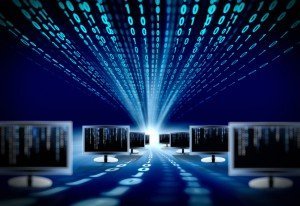 Traditionally, E-government or “e-Gov” encompasses the digital connectivity of government entities between multiple constituents. A vast majority of interactions are through online portals, but can also consist of other channels including instant messaging or internet forums. E-government can host a variety of participants including citizens, employees, businesses or other government agencies.
Traditionally, E-government or “e-Gov” encompasses the digital connectivity of government entities between multiple constituents. A vast majority of interactions are through online portals, but can also consist of other channels including instant messaging or internet forums. E-government can host a variety of participants including citizens, employees, businesses or other government agencies.
Over the next five years, E-Government should allow agencies an improved ability to continue offering immediate access to public servants, agencies and programs. Consequently, there will be an increase in integrated services, partnerships and networks that can strengthen the government’s capabilities to serve its people. In addition, it is anticipated that changes should occur on three key fronts:
- Knowledgeability and Awareness: As governments become more transparent their citizens become better informed. Advancements include enhanced visibility to operational statuses and real time details on local events and in-depth coverage of relevant issues. Internally, government employees and partners will have improved reporting functionality that allow for strategic decision making. Systems will allow more dynamic discussions of key government issues allowing involved officials to take action.
- Involvement and Participation: With stronger connections between government and individual systems there will also be increased public outreach and participation. This will predominantly be driven through three key facets: simplification of processes (ease of use), convenience (accessibility) and timely execution (speed). Discussion and testing the modernization of voting procedures and infrastructure will continue. People at various socio-economic levels will also actively look to systems that augment social movements and allow for other forms of expression.
- Productivity, Efficiency and Savings: Heightened file management–including record collection and data integrity–will allow for improved workflow and expedited processes. Government procedures supplemented with updated solutions will see a reduction of redundant and manual tasks. As more mobile applications become available, there will be extended remote functionality to employees and citizens. Savings through decreased costs will be reflected as budgets remain tightened.
Tackling Inherent Risks
Many of the same obstacles to e-Gov will still exist in 5 years. As with many current systems and online platforms, security remains a key concern. Exploitation from foreign or domestic attacks pose a potential threat with the severity of an incident directly correlated with system accessibility and the sensitivity of information. Data integrity will be questionable should any form of tainting and manipulation occur. This could immediately discredit agency actions or decisions. File sharing privacy will remain vulnerable to cracking and hacking techniques along with the activities of anonymous or anti-government groups who may also trigger system shut downs, outages or a variety of other unauthorized manipulations. Internally, bandwidth and infrastructure constraints may limit working operations and cause media/social backlash should sites become inoperable or excessively slow.
How Do We Get There?
When it comes to information technology, there is an abundance of options. For an improved e-government experience, a centralized software system can immediately become apparent. Government organizations have many considerations to make given these modern software choices.
Below are a few items that should be deliberately and carefully evaluated before beginning any government ERP software selection and implementation:
Self-Assessment: Realistically determine what needs exist. Be conscious of any current software capabilities against any that will be anticipated in the future. While many see the immediate difference upgrading from “green screen” menus on legacy systems to more user-friendly graphical user interfaces (GUI), there are a myriad of other aspects to address. Locate experienced resources that can help construct a business case that both understands and breaks down the benefits of a new system that will be in line with government goals and objectives.
Governmental Process Management: Selecting an optimal ERP system relies on understanding the unique requirements and policies of each organization. This is especially advantageous to ensure that internal processes work hand in hand to deliver the maximum benefit from system features. This later leads to meaningful metrics and consistent results that can be examined to drive continuous improvement. Agencies should look for opportunities and resources to assist them with recording, analyzing and measuring government processes as part of any ERP system selection.
Organizational Change Management: Similar to voters, government employees have voices that want to be heard. The level of diversity surrounding individual experiences involved across multiple functional areas requires a thorough approach that revolves a well-defined communications, transition and training plan. To mitigate organizational change resistance, stakeholder input and support are crucial elements making OCM essential for project success.
Planning and Guidance: Without a proper direction ERP projects are subject to unnecessary failure. Organizations often seek a consulting firm that inhibits the expertise and insight to help them in developing and managing their ERP projects. This becomes more evident when internal resources become limited and projects grow more complex and overwhelming. To review options objectively, government organizations looking to external firms should partner with experienced teams that are independent of software affiliation. The key is to find thought leaders who understand that government ERP selections and implementations are not simply IT projects, but rather are driven by the processes and people within the organization.
Learn more by downloading our white paper, Organizational Change Management in Public Sector ERP Implementations.
Written by Adam Boyce, ERP Consultant at Panorama Consulting Solutions.













